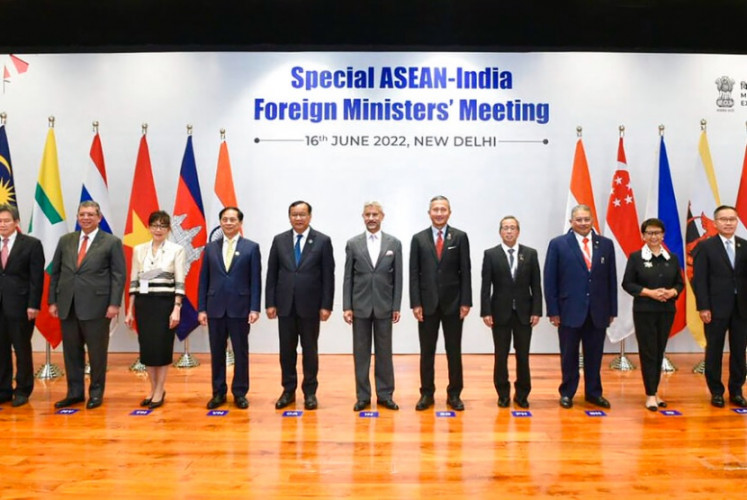Industry 4.0: What does it mean for HR directors?
Eventually, occupational structure will become polarized into high-skilled/high-paying and low-skilled/low-paying jobs. Unfortunately Indonesia is no exception.
Change Size
 Industrial Revolution 4.0 (IR 4.0) is expected to have an impact beyond low-skilled labor and traditional sectors such as manufacturing; unlike what its predecessor did decades ago. (Shutterstock/File)
Industrial Revolution 4.0 (IR 4.0) is expected to have an impact beyond low-skilled labor and traditional sectors such as manufacturing; unlike what its predecessor did decades ago. (Shutterstock/File)
I
ndustrial Revolution 4.0 (IR 4.0) is expected to have an impact beyond low-skilled labor and traditional sectors such as manufacturing; unlike what its predecessor did decades ago. While the constituencies — individuals, business organizations and public agencies — are preparing for the potentially excruciating transition, President Joko “Jokowi” Widodo has unveiled his strong commitment in support of the program.
During the Indonesia Industrial Summit 2018 at the Jakarta Convention Center (JCC) recently, the President agreed that these emerging technologies could deliver positive prospects for employment instead of risks for the economy once we develop the five priority sectors, namely food and beverages, textiles, automotives, electronics and chemicals.
It creates a new world occupational structure. In a refreshing moment of honesty, we might recognize that recent technological disruptions have been skillbiased. In many countries, it has meant skilled labor has become more relevant and productive, and therefore resulting in growing demand for it. However, there has noticeably been a fall in demand for mid and low-level skills as routine jobs have either been moved offshore or automated. Eventually, occupational structure will become polarized into high-skilled/high-paying and low-skilled/low-paying jobs. Unfortunately Indonesia is no exception. Exacerbating the challenge is the fact that most of our labor in our five priority sectors is low-skilled labor.
It results in the emergence of renaissance jobs. From a human resource (HR) perspective, IR 4.0 also presents another work trend. It continuously creates jobs that are more fulfilling and intellectually stimulating than the routine jobs that they substitute. In order to stay competitive, the workforce is encouraged to utilize its knowledge in the technical domain such as problem solving, structured thinking and often industry expertise. It creates the emergence of renaissance jobs that combine the above mentioned skills in newly designed positions such as experienced architects and application product managment.
To ensure that our country makes the most of these technological revolutions, the success of Pak Jokowi’s pledge can not be fulfilled without the support of HR directors. However, Mercer’s study found that only 4 percent of leaders think their organizations have a plan to develop the required skills for their employees nor the transitional agility required in ensuring positive growth of employment and equality. After spending years working with HR leaders from the five priority industries, I think there are five areas they should prioritize to foster organizational and workforce agility.
As workflows will need to be redesigned to reflect the new business strategy and operating model, HR directors should lead the conversation with core business functions such as production, operations or manufacturing to see the technology and machine developments within their industry and identify how the adoption of technological trends would impact the workforce. Only then would the senior management team have aligned vision of the future workforce.
Unlike the old days, HR directors should shift from traditional manpower planning to strategic workforce planning where we size and shape the future workforce under different business scenarios. This process would help HR leaders to flexibly quantify the needs from headcounts (number of people) and skills and competency required by the organization from time to time while considering both the internal and external labor market.
















